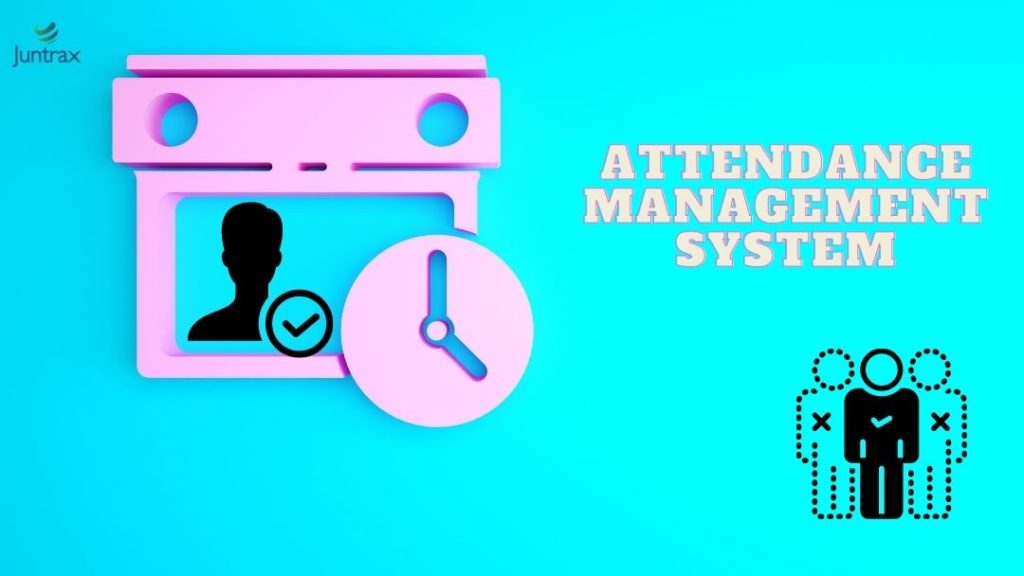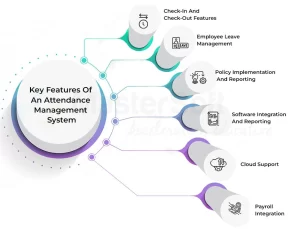What is an Attendance Management System?

Attendance Management system refers to a software-based system that keeps a record of all employee attendance data.
Integrity and sincerity are the pillars of a successful workspace. But these factors do not come complimentary with the office space. They need to be developed and inculcated by forming a disciplined and regulated work environment.
To achieve this discipline, it is essential to monitor employees and keep a track of their devotion to their work.
Attendance Management is one such method that allows the admin and the HR to keep an eye on the presence, absence and overtime contribution of an employee for their job and the company as a whole.
In this article, we will explore the different aspects of Attendance Management and its importance in the growth of an enterprise.

What is Attendance Management?
To ensure regularity and sincere work devotion of an employee it is important to keep track of their presence in the office. This presence is monitored in different ways throughout different companies and industries. While some companies still prefer to mark attendance manually and maintain an attendance register, there are many companies that make use of biometrics or attendance software.
The medium of maintaining attendance might differ but the requirements of tracking them are constant in all organisations. This process of managing and monitoring the presence of an employee in an office is known as Attendance Management.
You can also read : Do SMBs, SMEs, and Startups need Automated Solutions?
What is an Attendance Management System?
Conventionally an Attendance Management system could be understood as a set of methods and procedures which are carried out for the purpose of regulating employee attendance. This system could be software-based or software, based.

Currently, an Attendance Management System refers to an automated software cloud-based with a cloud-based interface. This software is instrumental in simplifying the process of regulating employee attendance and coordinating with other office management systems to share and extract data. This software technology has not only enhanced the method of managing attendance but has also created opportunities for utilising data in different processes and departments of the company.
The Need for Attendance Management System
Attendance Management Systems are essential for a company as they provide a well-structured framework to monitor the presence and absence of its employees.
Manually tracking employee attendance using paper registers and digital spreadsheets is now a relic of the past. In the era of hybrid work and heightened workplace flexibility and transparency, implementing an Attendance Management System that automates the entire attendance tracking process is essential. Such a system enables employees to log and store their attendance online, making it particularly convenient for remote workers.
Moreover, it can integrate seamlessly with your leave and shift management.
With time, most of the manual office management systems were replaced with software systems, which promised better results in considerably less investment of time and effort. The same happened with the Attendance Management System. Software companies like Juntrax Solutions came up with business operations software that could simplify the job of the HR department by switching their attendance management system from a manual interface to an automated cloud-based interface.

To understand the need for an automated attendance management system we can take the example of laptops and computers. Initially, companies used dedicated computer setups for their employees to work and manage the company. These setups contained selected on-premise software which came with a set of limitations like data security, storage issues and manual inputs.
Despite all these limitations, the computers were good enough to work with, but there was scope for improvement and a technological upgrade. With the introduction of PCs and Laptops, things became more flexible and convenient.
Employees could work even outside office premises, they could work in an automated setup and engage with advanced tools. This change impacted the growth of companies in a positive way and opened up numerous opportunities for ideas, inventions and creativity. Similarly, an automated attendance management system provides smooth and error-free functioning which allows flexibility and convenience.
You can also read : Reasons to Invest in Employee Management System
Types of Attendance Management Systems (AMS)
While the fundamental objective of an Attendance Management System (AMS) is to streamline attendance tracking, various types exist to cater to different organizational needs and technological preferences.
Understanding these types can help businesses select the most suitable AMS for their unique requirements.
1. Manual Systems
Manual systems are the traditional approach to attendance tracking, involving paper-based registers or simple digital spreadsheets. Employees manually record their attendance, which HR personnel then review and process.
Although this method is straightforward, it is prone to errors, time-consuming, and inefficient, especially for larger organizations.
2. Mechanical Systems
Mechanical systems were an early innovation in attendance tracking, primarily featuring punch cards or time clocks. Employees would insert a card into a machine to record their work hours.
While more reliable than manual methods, mechanical systems still require substantial administrative oversight and are susceptible to physical tampering or damage.
3. Biometric Systems
Biometric systems have gained popularity due to their high accuracy and security. They use unique physical characteristics, such as fingerprints, facial recognition, or retinal scans, to verify employee identity and record attendance.
This type of AMS reduces the risk of buddy punching and time theft, ensuring precise and secure attendance records.
4. Proximity Card Systems
Proximity card systems involve employees using RFID (Radio Frequency Identification) or NFC (Near Field Communication) cards to clock in and out. The cards are scanned at a terminal, automatically recording attendance data.
These systems are convenient and faster than traditional punch cards but may still pose security risks if cards are lost or shared among employees.
5. Mobile-based Systems
Mobile-based attendance systems have become increasingly relevant with the rise of remote work. Employees can check in and out using mobile applications, which often incorporate GPS tracking to validate their location. These systems provide flexibility and convenience, particularly for remote or field-based staff.
Furthermore, mobile AMS solutions often come with additional features like push notifications and real-time updates, enhancing overall efficiency.
6. Cloud-based Systems
Cloud-based AMS solutions offer the ultimate flexibility and scalability. Accessible from any location with an internet connection, cloud-based systems store attendance data on remote servers. They allow for real-time data access, seamless integration with other HR and payroll systems, and automated updates.
This type is particularly beneficial for organizations with multiple locations or remote teams, ensuring uniform and centralized attendance tracking.
7. Integrated HRMS Systems
Integrated Human Resource Management System (HRMS) solutions incorporate attendance tracking as part of a broader suite of HR functionalities. These systems provide a holistic approach to employee management, combining attendance, leave, payroll, performance, and other HR-related processes.
Such integration minimizes data redundancy, enhances reporting capabilities, and streamlines overall HR operations.
Each type of AMS has unique advantages and potential drawbacks. Choosing the right system involves assessing your organization’s specific needs, including the size of your workforce, the nature of your operations, and your existing technological infrastructure.
By selecting the most appropriate AMS, businesses can enhance accuracy, efficiency, and employee satisfaction in their attendance management processes.
What are the key elements of Attendance Management System?

Effective attendance management is more than just recording who was present on a given day. It includes a range of elements that ensure accuracy, fairness, and compliance while promoting a productive work environment.
Here are the key components that make up an efficient attendance management system:
1. Real-time Tracking and Recording
One of the fundamental aspects of attendance management is the real-time tracking and recording of employee attendance. Whether through biometric systems, mobile apps, or proximity cards, capturing accurate attendance data as it happens is crucial.
Real-time tracking minimizes errors, reduces fraudulent practices, and enables quick access to attendance records, which is particularly beneficial for payroll processing and compliance reporting.
2. Absence and Leave Management
Effective attendance management systems should seamlessly track various types of absences, such as sick leave, vacation days, and personal time off. This feature helps maintain accurate attendance records and ensures that employees’ leave balances are up-to-date.
An integrated leave management system can automate leave requests and approvals, making the process transparent and efficient and reducing administrative overhead.
3. Shift Management
For organizations that operate in shifts, managing these shifts efficiently is crucial. An advanced attendance management system can facilitate shift scheduling by allowing managers to assign shifts, track shift swaps, and ensure that there is adequate coverage at all times.
Additionally, it can help monitor overtime and ensure compliance with labor laws and organizational policies regarding work hours and rest periods.
4. Compliance and Reporting
Organizations must comply with various labor laws and regulations, which often include attendance tracking, record-keeping, and reporting stipulations. A robust attendance management system should offer features that help adhere to these regulations, such as automated record-keeping, detailed reporting capabilities, and audit trails.
Compliance ensures that the organization avoids legal issues and maintains a fair and transparent work environment.
5. Integration with Payroll Systems
A key element of attendance management is its integration with payroll systems. Accurate attendance data is essential for calculating wages, overtime, and deductions correctly. By integrating attendance management with payroll, organizations can automate these calculations, reduce errors, and ensure that employees are paid accurately and on time.
This integration also simplifies the payroll process, making it more efficient and less prone to discrepancies.
6. Employee Self-Service
Empowering employees to manage their attendance can significantly enhance transparency and reduce administrative work. Employee self-service portals or mobile apps allow employees to clock in and out, request leave, view their attendance records, and track their leave balances.
This empowerment fosters a sense of responsibility and accountability among employees and improves overall engagement and satisfaction.
7. Analytics and Insights
Modern attendance management systems often come with robust analytics and reporting tools that provide insights into patterns and trends. Analyzing attendance data can help organizations identify issues such as high absenteeism, frequent tardiness, or excessive overtime.
These insights can inform decision-making, enabling managers to address problems proactively and implement strategies to improve attendance and productivity.
8. Scalability and Flexibility
As organizations grow and evolve, their attendance management needs may change. A scalable and flexible attendance management system can accommodate these changes, whether adding new employees, adopting new attendance methods, or integrating with other business systems.
Flexibility ensures that the system remains relevant and effective regardless of how the organization evolves.
Benefits of an Attendance Management System
Analysing Employee Performance
Analysing attendance of every employee allows the admin to keep a track of their presence and absence in the office. This information is also utilised to assess the presence and work output ratio of every employee. Admins can cross check all their data with other systems like project management and talent management to get detailed reports of employee performance.
Data Integration
From processing payroll to calculating overtime, monitoring absence rate and tallying timesheets, there are numerous different departments and systems that require attendance data. Attendance Management Systems like Juntrax provide an integrated platform for sharing and fetching information from other systems simultaneously and coordinating with them to form an overall effective business management system.

Access Flexibility
Automated Attendance Management Software allows flexible user access even when the employee is outside their office premises. This feature was very useful and essential for companies to sustain their work in the covid19 pandemic. Employees, admins and superadmins could access the Attendance portal from the comforts of their home without any requirements of a specific system setup or interface. All they needed was the authorised login id and password to access the portal.
Employee Self-service
Attendance management systems like Juntrax allow employees to clock in and clock out through their employee portal. This gives the control in their hands and does not involve the HR or any other authority for keeping a track of their daily attendance. While the employees account for marking their own attendance, the system does the remaining work by maintaining a tabulated record of the total time, date and other information of their regular attendance.
You can also read : Benefits of using Project Management System in Startups and SME
When Would You Need an Attendance Management System?
Deciding whether to invest in an attendance management system can be challenging.
However, there are clear indicators that can signal when such a system becomes necessary for your organization.
1. Manual Attendance Tracking is Cumbersome
If your organization is still using physical registers or online spreadsheets to track attendance, it’s time to consider an upgrade. While these methods might be sufficient for a small team, they become impractical as your business scales.
Here are a few drawbacks of manual tracking:
- Data Management Complexity: As your workforce grows, manually tracking attendance can overwhelm your HR team. The process becomes increasingly time-consuming and prone to errors, making it difficult to consolidate data for payroll processing.
- Inconvenience for Employees: Your employees may find it tiresome to manually sign registers every day. In an age of streamlined digital solutions, they expect a user-friendly attendance tracking system that is as intuitive as their personal tech devices.
2. Frequent Payroll Errors
Manual attendance tracking often leads to payroll discrepancies. Here’s why automated attendance tracking can help:
- Error Reduction: Human error is a significant risk when manually inputting attendance data. Incorrect data can result in miscalculated gross pay, affecting employee morale and satisfaction.
- Efficiency in Payroll Processing: Manually processing payroll involves calculating working hours, time off, and overtime for each employee, a task that is both time-consuming and error-prone. An automated system accelerates this process, ensuring timely and accurate payroll processing.
3. Compliance is a Challenge
Ensuring compliance with labor regulations is crucial, and lack of a proper attendance system can make this task herculean:
- Scattered Data: Without a structured system, attendance data may end up scattered across various documents and locations, complicating documentation and compliance efforts.
- Regulatory Adherence: Keeping accurate records is vital for complying with labor policies, such as mandatory days off and overtime compensation. During audits, disorganized attendance data can lead to significant fines and other penalties for non-compliance.
Additional Considerations
Apart from the primary signs mentioned above, other factors might prompt you to invest in an attendance management system:
- Scalability: As your business grows, the system should be able to adapt seamlessly to increased data volumes and complexity.
- Integration Capabilities: Modern attendance management systems often come with integration features that allow them to connect with other HR and payroll systems, ensuring a holistic approach to employee management.
- Real-time Monitoring: These systems enable real-time tracking and reporting, providing managers with immediate insights into attendance trends and enabling proactive management.
- Employee Self-Service: Many systems allow employees to check their attendance records, request leave, and monitor their time-off balances directly, reducing the administrative burden on HR.
By recognizing these signs and understanding the additional benefits, you can make an informed decision about implementing an attendance management system.
Such a system enhances operational efficiency and helps maintain employee satisfaction and regulatory compliance.
Conclusion
One might not consider Attendance Management as an essential aspect to look after. But this is the difference between the average and efficient performance of a company. When you start paying attention to every aspect and every minute cog of the entire mechanism, you create a machine that yields maximum output and opens up opportunities for success.
Attendance Management is one such cog in the mechanism of your company and needs enough attention to direct your employees towards a disciplined, sincere, productive and dedication work structure.
4 thoughts on “What is an Attendance Management System?”
Comments are closed.

Very Nice Blog…Thanks for sharing this information with us. Here am
sharing some information about Our Software Company
Campus Management System
Very Nice Blog…Thanks for sharing this information with us. Here am
sharing some information about Our Software Services
Campus Management System in Malaysia
Very Nice Blog. Thanks For Sharing This Article.